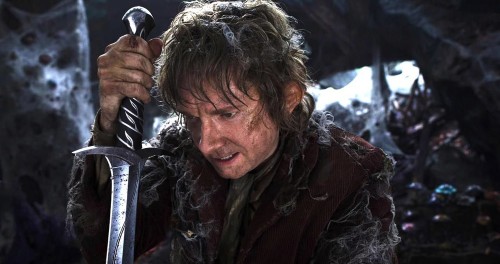The Hobbit was my first experience of Tolkien, back in 1995 when it was our class reader in school. It had a big impact on me, and in fact I remember writing a piece of what was effectively crossover fan fiction as part of a school creative writing exercise, putting Gollum in the world of my other mid-90s obsession: Doom. I wish I could find that document as an insight into how my brain worked at a time when gaming was becoming a big deal to me.

I grew into The Lord of the Rings and still am yet to develop the patience for The Silmarillion, and I generally loved Peter Jackson’s film trilogy ten years ago. I followed this through development hell and sulked when Guillermo Del Toro dropped out, but as excited as I was to see this vintage of Tolkien back on screen, the lack of restraint on show from Peter Jackson was a worry. King Kong was desperately in need of a trim, and then The Hobbit – a children’s book that, let’s not forget, is significantly shorter and more straightforward than any of the three LOTR novels – into two movies, with sequences not shown in the book added to tie it in more closely with The Lord of the Rings.
And then it became three films. Pardon?
I finally saw it yesterday, though, and I didn’t think it suffered much at all. It galled slightly to see scenes from the book padded with cameos from Lord of the Rings characters who don’t show up in The Hobbit, and that very Peter Jackson affliction of needing to put the cast in the middle of things for the sake of it – hello, stone-giants – but strong performances carried it. Ian McKellen, Martin Freeman and Richard Armitage in particular are outstanding. Benedict Cumberbatch also does the best on-screen depiction of a cloud since Galactus in Rise of the Silver Surfer. Expect more of him later.
That leaves the frame rate, then. Much has been written about it, some more comprehensively and authoritatively than I’ll attempt, and from what I’ve seen the general opinion is wary at best, with most critics in particular being against it. I’m not, though. I found it less obtrusive than the 3D that it does so much to improve, and when the cyclical 3D fad passes again, I wouldn’t be disappointed if HFR sticks around. Once I got accustomed to it and stopped thinking all close-ups were sped up, I experienced none of the ballyhooed issues with it looking like a soap opera.
People criticising 3D are doing it from the logical position that this is the third attempt at popularising the format and likely the third failure at making it anything other than a niche. HFR is new, cinema having been universally presented at 24fps since the advent of sound. Let’s give cinematographers a chance to work out how to shoot for it before we declare it DOA.
